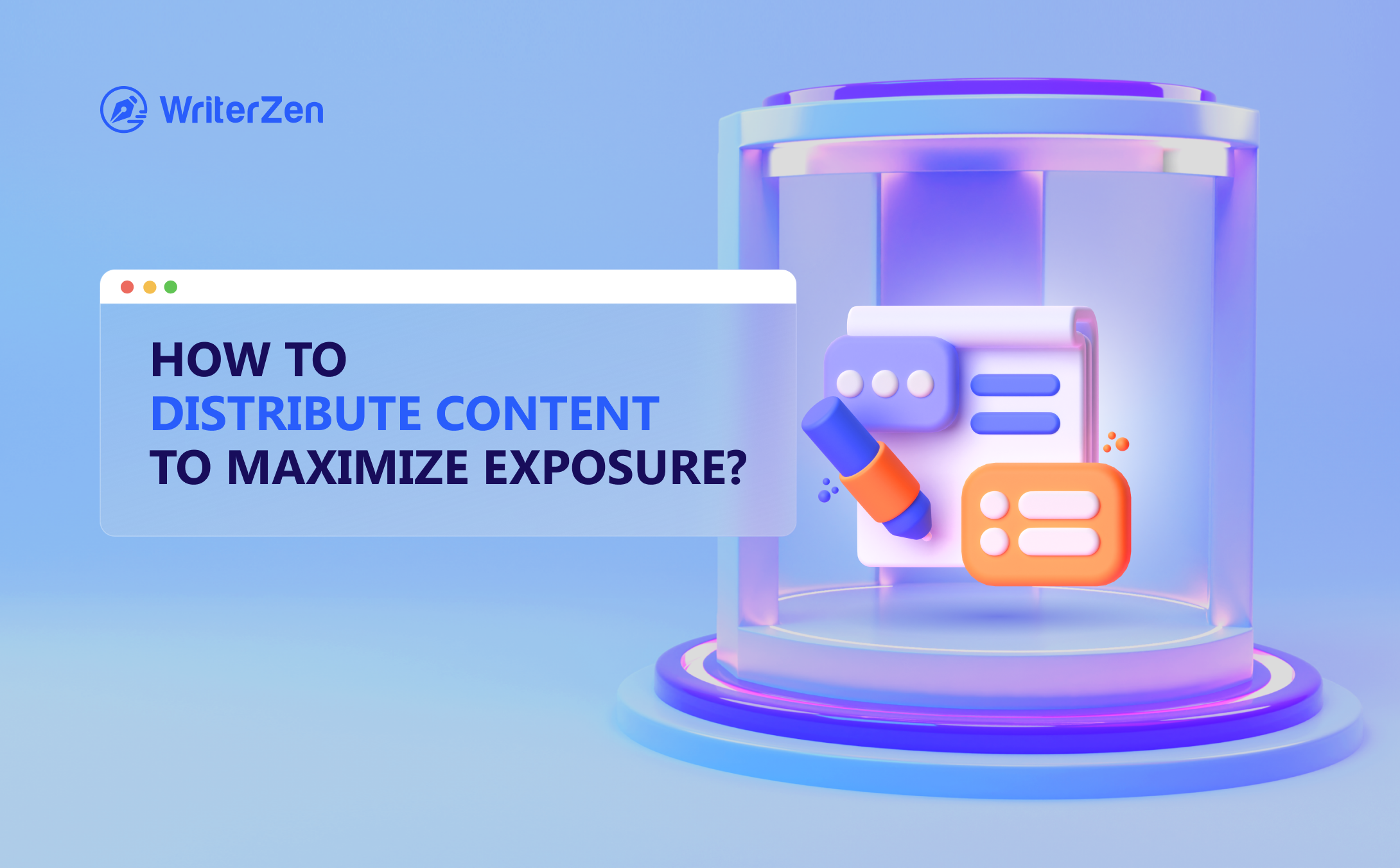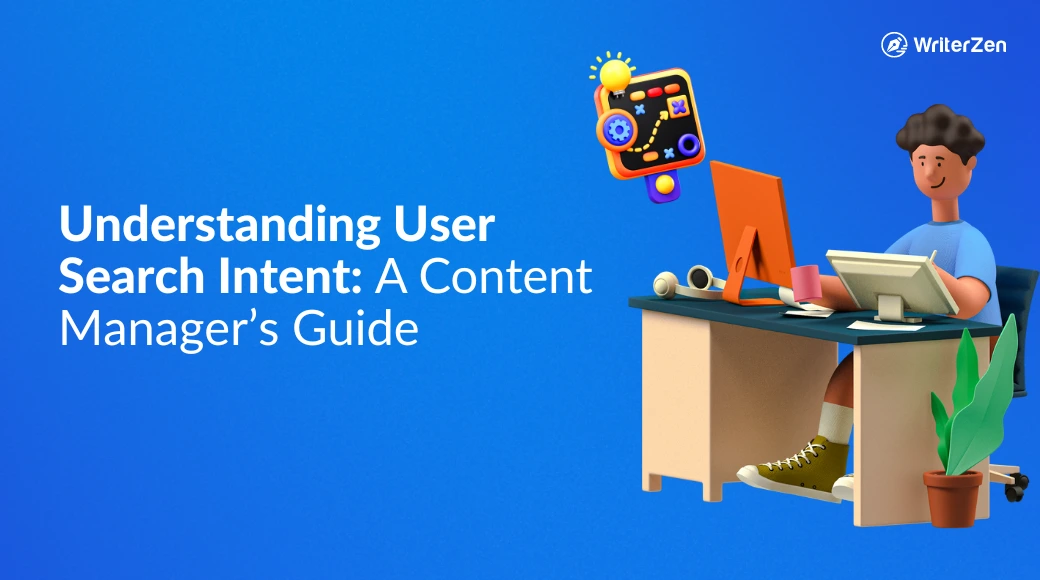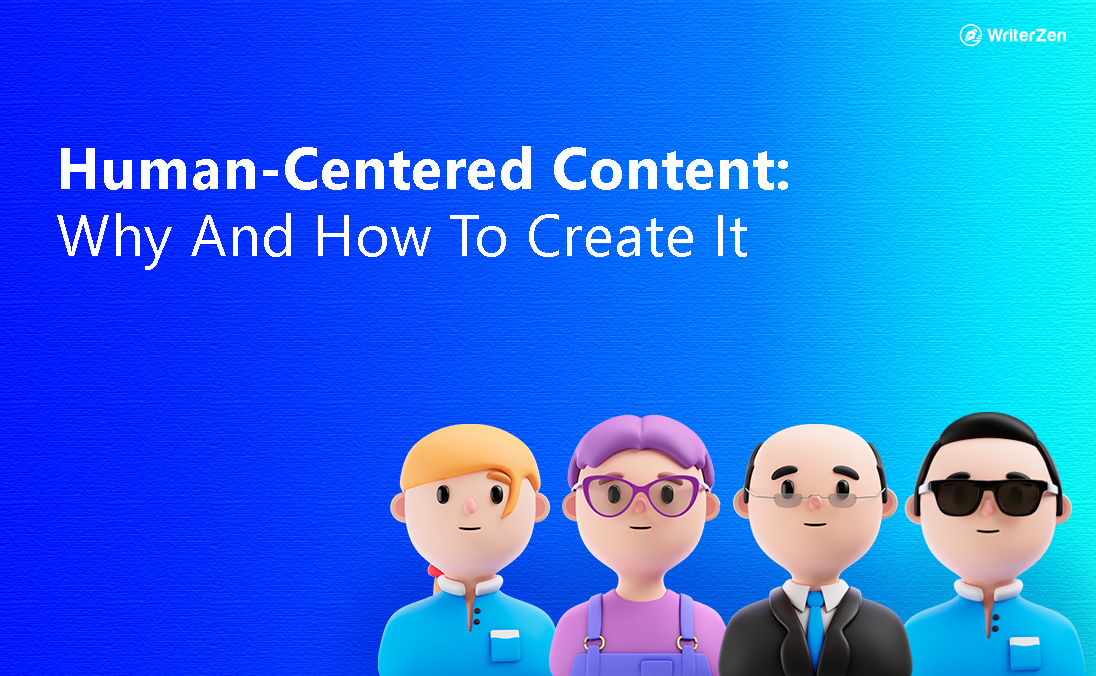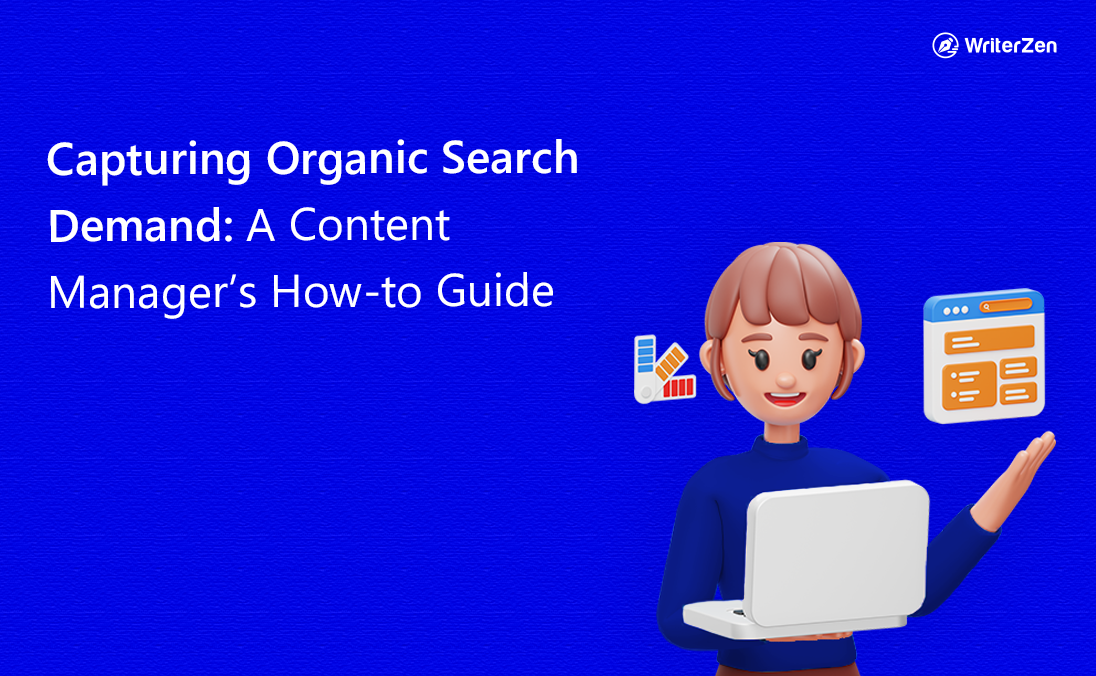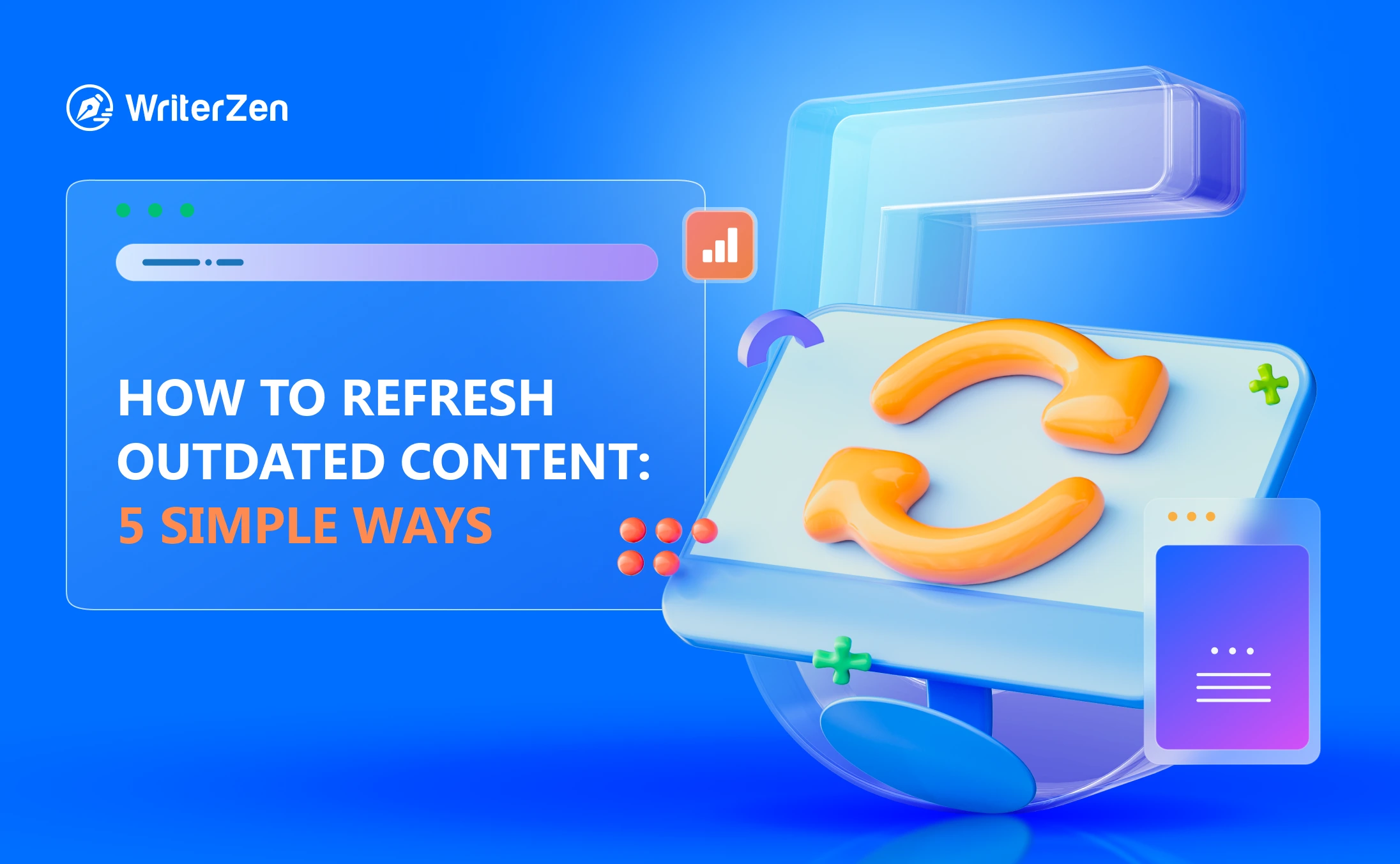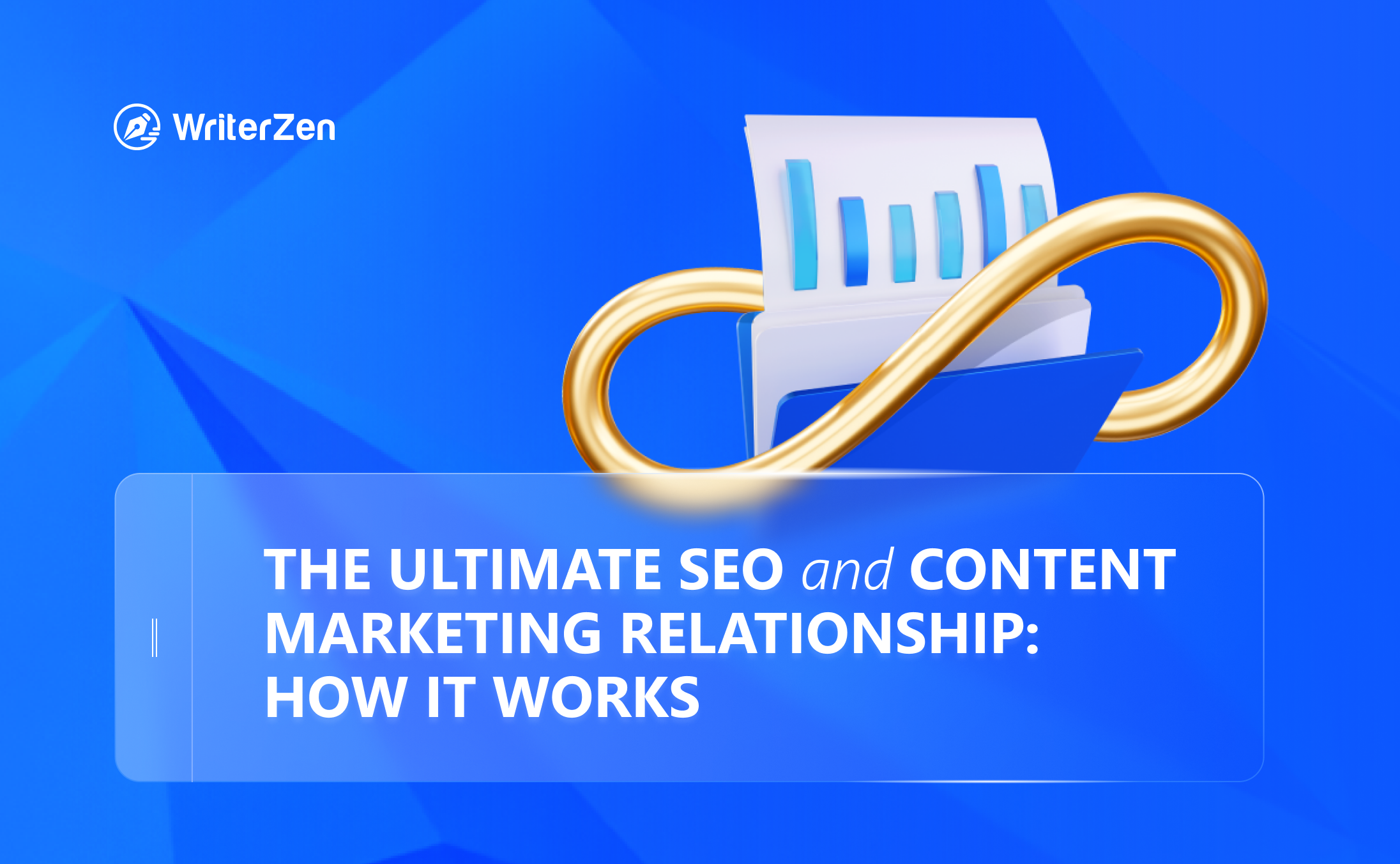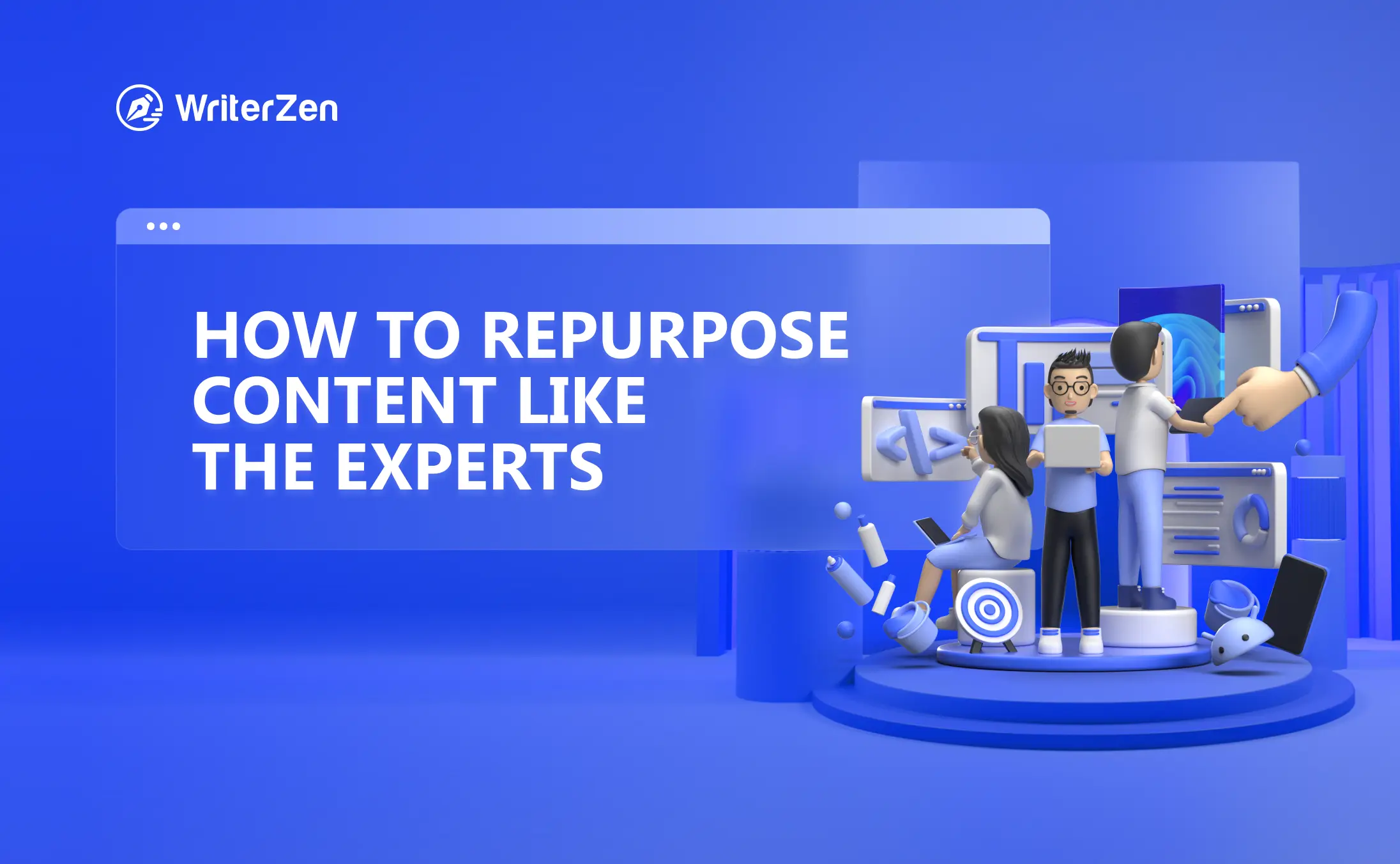The whole idea of content distribution is to maximize the reach and lifecycle of content through various channels and platforms, ensuring it gets in front of the right eye, drives engagement, and delivers value over a more extended period.
Remember the times when marketers, SEO enthusiasts to be precise, were all about “content is king”?
It became the marketing mantra, and sure enough, it caught on like wildfire. Fast forward to now, and the rallying cry has shifted to “content distribution is king.” So, what's up with that?
Let’s dive in to find out why content distribution is all the rage now and how to stop your content from dying an early death with proper content distribution.
Why Is Content Distribution More Important Than Ever?
Did you know a whopping 90.63% of pages don’t receive any organic traffic from search engines?
It's like having a treasure trove of ideas that turn into a ghost town!
Relying solely on blogs as your main distribution channel will likely leave you disappointed. Think of blogs as your central hub, housing all your brilliant ideas and resources, ready to be shared far and wide—be it on Twitter, YouTube, LinkedIn, or within Slack groups.
Distributing your content effectively is like giving it wings, enabling it to fulfill its purpose. Without this, even the most exceptional content might just end up gathering dust, not drawing in those coveted leads and customers, ultimately draining your time and energy.
Brands holding their breath, hoping for organic searches to work their magic, might find themselves in a tough spot. It might be a long wait before search engines notice and rank your content, causing it to lose its freshness and appeal.
This not only undermines the brand's overall initiatives but also throws a wrench in understanding what content truly resonates with the customers.
Without proper insights and metrics, brands can't really discern what material hits the mark for different customer segments or what content ropes in the best deals. They are also left in the dark about the evolving priorities of customers throughout their journey.
So, now that we know just having great content isn’t the endgame and distributing it rightly is the key, how do we ensure that our content doesn’t just sit in a corner but flies high and wide? By creating a distribution strategy.
Create a Winning Distribution Strategy in 5 Steps
In this part, we’re going to walk you through building a content distribution strategy, step by step, starting from square one. Whether you’re a beginner or just looking to refine your approach, we’ve got you covered!
Step 1: Understand Your Target Audience
You’ve heard of user personas and their crucial role in shaping your marketing strategies.
Think of a marketing persona as a detailed sketch representing a significant part of your audience, crafted to refine your content delivery. It’s all about molding your content to be as relevant and useful as possible to your audience, something the Content Marketing Institute emphasizes.
However, not all businesses delve into creating these detailed buyer personas—those who do, find themselves better equipped in tailoring and channeling their content effectively.
Take Zenlytics, for example. They've nailed creating personas, which is clear from the top-notch content they generate and the strategic ways they share it.
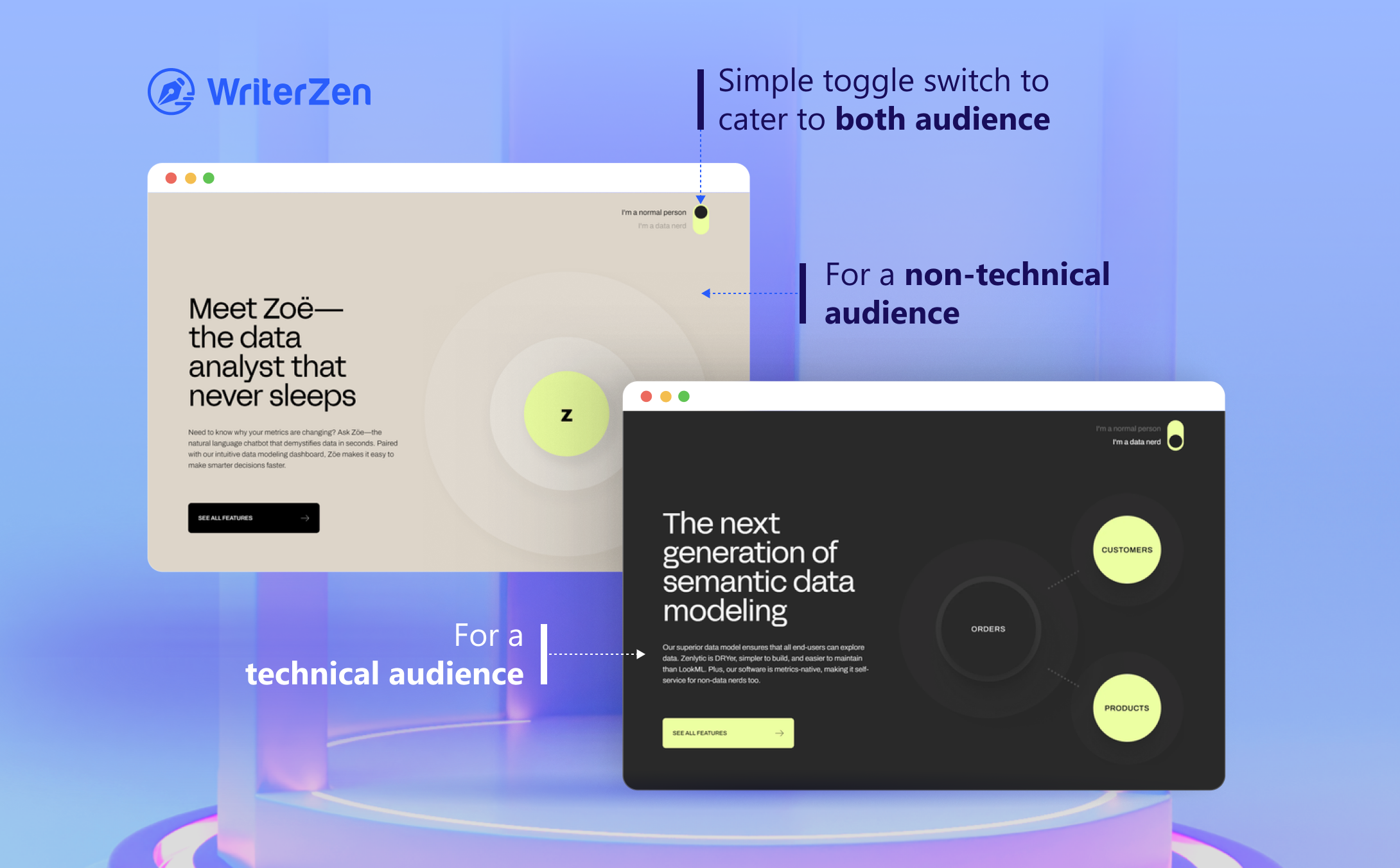
Now, you might be wondering, “How does creating personas relate to distributing content?”
Well, it’s quite straightforward. Developing personas lets you zoom in on what truly resonates with your customers—what they genuinely want to see and read. Knowing your audience's preferences makes content distribution a breeze.
It means you’re producing and sharing content that genuinely meets your audience's desires, instead of creating content just for the heck of it. No precise persona in place?
No worries!
Just start by pondering—who truly gains from your content? Are they the ones calling the shots? Does the content enhance their connection to your brand? Addressing these queries will steer you toward pinpointing your ideal audience.
Step 2. Identify the Platforms Most Relevant to Your Audience
Content distribution is all about picking the right platform to showcase your brand.
But here's the trick: it's not just about trying any channel. It's about being where your audience is. So once you've nailed down who you're aiming for, you've got to find out where they're spending their time. That way, your content reaches them right where they are.
For instance, if your focus is the Baby Boomer crowd in a specific area, you're probably better off with Facebook than with TikTok, which is a hit with youngsters. But if you want to target B2B marketers, know that LinkedIn has become a go-to spot for B2B companies over time.
What should be your first move to identify the right distribution platform for your audience?
Dive back into your buyer profiles to pinpoint the perfect channels. But before that, you need to have a generous idea about the platforms you can use as content distribution channels.
Choose the Right Content Distribution Platform Options
In line with DuoQ's viewpoint, just grouping media into paid, owned, and earned doesn't really give you the full picture—it only shows you whether you have the reins when it comes to the content that’s put out there.
So, we like to look at things a bit differently, breaking them down into four distinct categories:
-
Search Engines, like Google, Yahoo, and DuckDuckGo
-
Social Media Platforms, think LinkedIn, TikTok, Instagram, etc.
-
Social Publishing Platforms, such as Medium and Substack.
-
Community Channels, which include Slack channels, newsletters, and focused groups.
This approach helps you understand not just who owns the content but where and how it’s being shared and discussed, offering a fuller, clearer view of your media landscape.
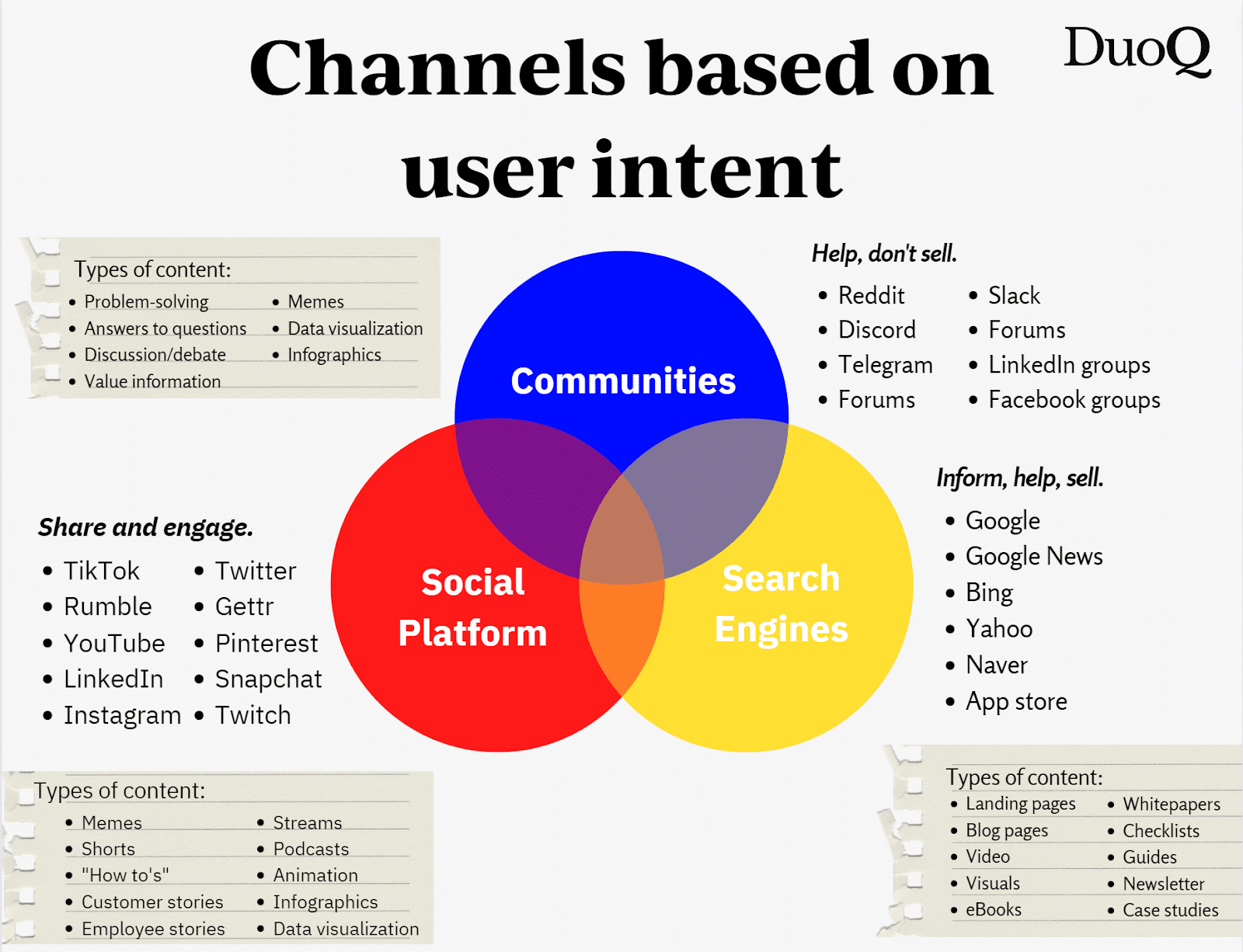
Source: DuoQ
If you’re wondering how, where, and when to promote your content, there are a few factors to consider.
To simplify the process of choosing your optimal channels, we’ve prepared some comparisons below. There, you’ll find detailed information on what types of content are distributed on those channels, target KPIs, and other important metrics to keep track of.
Remember that building a loyal fanbase doesn’t happen overnight. It takes time. The best way is to strike a healthy balance between paid and organic distribution channels.
Step 3: Create a Repurposing and Distribution Plan
By integrating a robust repurposing and distribution plan into your content strategy, you ensure that your content works harder for you.
It’s about being smart, maximizing reach, staying relevant, and continually delivering value, keeping you in sync with your audience and ahead of the competition. Start by crafting a repurposing blueprint.
Analyze your existing content and identify pieces that performed exceptionally well. Break them down into smaller, digestible bits like blog posts, social media snippets, infographics, or podcasts, ensuring each piece maintains the essence and value of the original content.
Allocate resources and time to promote your content vigorously on these platforms, paying attention to optimal posting times and engagement metrics.
Engage with your audience through comments, messages, and discussions to understand their perspective and build relationships.
Step 4: Decide Which KPIs to Track
Before diving into spreading the word, it's crucial to nail down the why and the what—what do you want your content to achieve, and why are you distributing it?
And, of course, it’s essential to set some clear, tangible goals and key performance indicators (KPIs) to keep your distribution strategy on point.
So, say you’re aiming to amp up your website traffic. In this case, you’re going to want to track the number of visits your site is raking in over a certain timeframe. It’s not just about blasting your content into the void; it’s about knowing which bits of your content are pulling people in and getting them to stick around and convert.
If, on the other hand, you're all about snagging leads, then you need to be counting those leads, pinpointing which content pieces are the lead magnets, and figuring out what percentage of those leads is the real deal.
Remember, when it comes to setting goals, specificity is your best friend.
For instance, you might aim to boost new user visits to ramp up brand awareness, or maybe you want to up the ante on sales-qualified leads, or perhaps you’re looking to trim down that pay-per-click ad spend by zoning in on what truly resonates with your audience.
The goals you zone in on are your guiding stars, pointing you to the metrics you ought to be keeping tabs on. Trying to become a social media maestro? Then, impressions, follower growth, and social shares should be on your radar.
Got your eyes on conversion? It's all about monitoring conversion rates, bounce rates, and cost-per-click.
And let’s not forget about customer satisfaction. If making your customers happy is your jam, you should be collecting those glowing testimonials and watching those customer satisfaction (CSAT) scores.
In the end, it’s all about getting your content the attention it deserves and making sure it’s doing its job effectively!
Step 5: Measure Your Performance
When it’s about content distribution, you have to gauge how well it's doing out there. It’s like throwing a bunch of seeds – you gotta go back to see which ones are sprouting!
Remember those goals and KPIs you outlined? Time to dust them off and see how you're stacking up.
For those of you keeping an eye on website traffic or conversions, Google Analytics is your pal. Tracking social ads? Dive into the native analytics tools on platforms like Instagram to see what the numbers are whispering.
Running a campaign that’s everywhere – social ads, organic posts across platforms? Then Hootsuite is your MVP. It's like having a dashboard for all your analytics and getting tips on how to rev up your game – all under one roof!
Get down with your data, sift through it to see which piece of content is getting high-fives and which channels are hitting the right notes.
When are your folks most likely to hang out online? Knowing this helps in fine-tuning your distribution tactics and crafting content that's like music to your audience’s ears. It’s all about resonating with your crowd and tweaking your game plan to make the most impact!
4 Tips to Ace Content Distribution
Distribute Your Content and Tailor It to Each Platform
As you share your content, it's crucial to mold it to fit the vibe and the folks on the platform you’re using. Why? Well, it’s like giving your content its best shot at getting folks talking and expanding your audience.
Think about it— one webinar can be transformed in countless ways. But that doesn’t mean throwing the exact same content everywhere. People crave a sense of familiarity when they hop on a social channel.
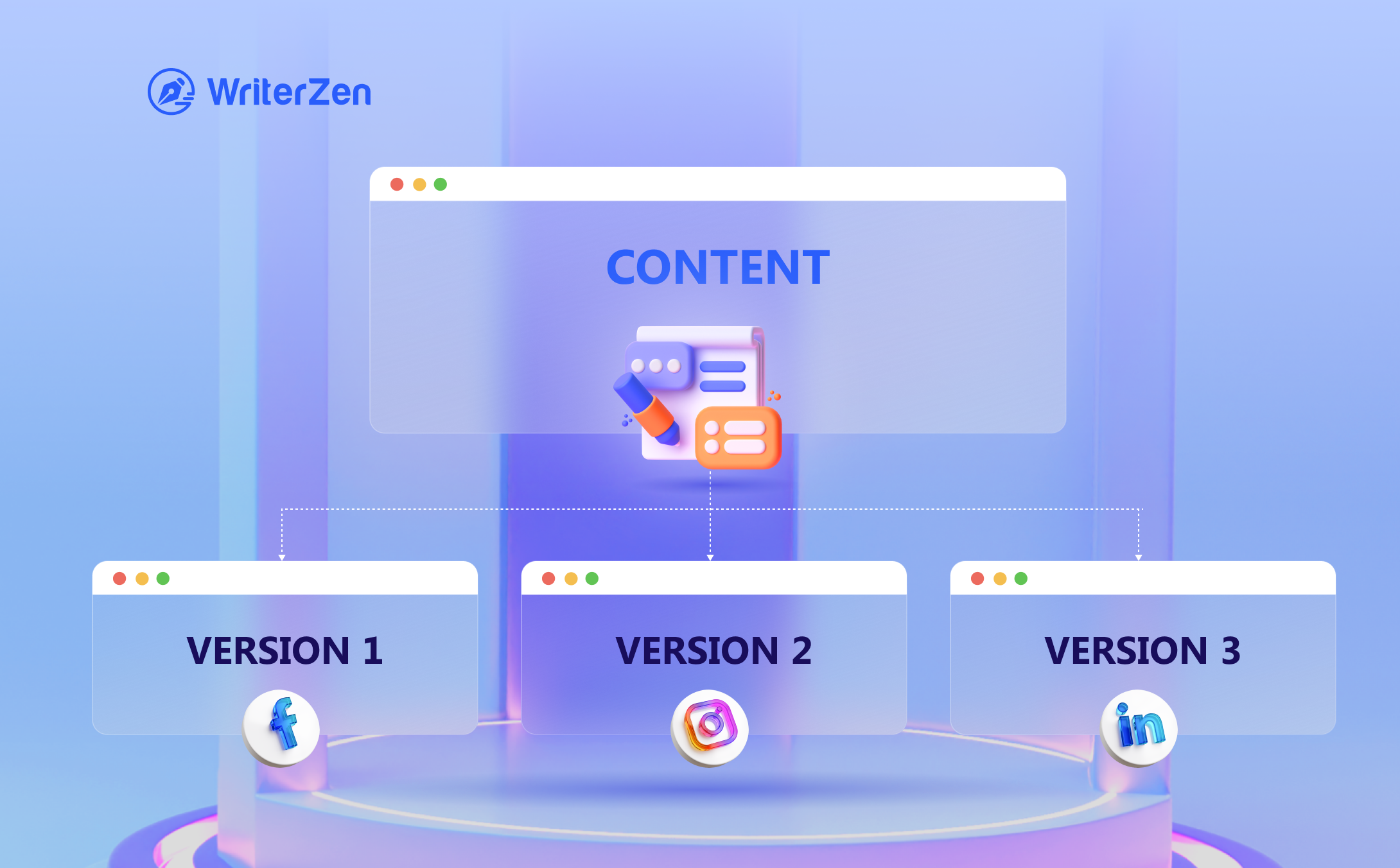
Now, ever heard of cross-platform campaigns? It’s when your content makes rounds across various platforms, all serving one grand campaign.
Sure, the content might wear different hats on different platforms, but each piece is like a puzzle piece, completing the bigger picture, contributing to the overall goal of the campaign.
So, remember, the key is tailoring your content, making it feel at home on each platform, all while keeping the bigger picture in mind!
Using Paid and Organic Distribution Channels Strategically
Paid channels, like Google Ads and those eye-catching social media ads, can surely spread your message far and wide, quickly getting more eyeballs on your website.
But let’s be real, if not played right, they can be a bit of a money pit and might not hit the mark.
On the flip side, there’s the organic route – think SEO, social media chit-chat, and some good ol’ email marketing. They’re fabulous for pulling in traffic and creating a buzz, but patience is key here. It’s like planting a garden; it takes time and TLC to see those blossoms!
Weave together a strategy that blends the fast-paced world of paid channels with the slow and steady wins the race approach of organic ones.
It’s all about finding that sweet spot that aligns with your brand’s vibe and your wallet's limits. Keep it balanced, and watch your reach grow!
Leverage Native Content with No Links
Amanda Natividad's approach to content can indeed flip the script on how we share and consume information. It’s all about going native!
Instead of hosting a blog post or an article on your own site, why not share that valuable content directly where your audience hangs out?
Think YouTube videos instead of site-embedded ones, or engaging threads on platforms like BlueSky, Mastodon, or Twitter instead of site posts.
Here’s the deal. This approach makes content more digestible and more likely to catch fire and go viral.
And there’s more. It can amplify your brand, painting it in the hues of familiarity and credibility because, let's face it, coaxing people over to your website can be quite an ordeal.
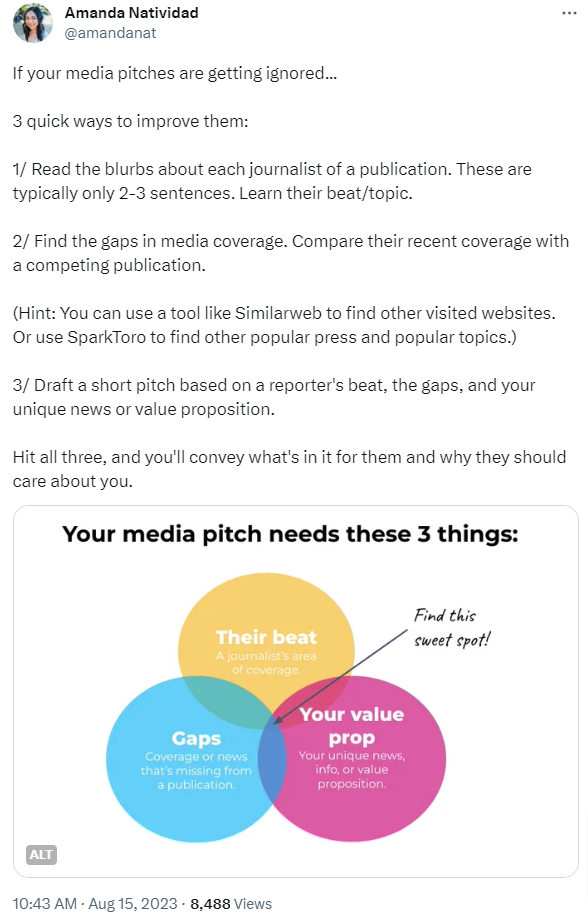
Source: Sparktoro
It's a jungle out there when it comes to capturing emails and trialing products! Even getting users to click a link to your site can be a monumental task.
And should they eventually find their way to your website, nailing down the ROI and executing full marketing attribution can be akin to chasing shadows.
By leveraging native content, you align your brand closer to where your audience is, making interactions seamless and, potentially, more rewarding.
The ultimate goal of content distribution is not “Visit my site to see this,” but rather “Hey, here’s something valuable right where you are. Enjoy!”
It’s about smoothing the journey for your audience, enhancing the likelihood of engagement, and possibly making your brand more resonant and memorable.
Collaborate with Influencers
Teaming up with micro-influencers or experts in your field can be a game-changer for your content. It’s actually one of the trending practices in recent years.
For example, at WriterZen, we have been mixing it up, creating fresh content every week, and taking the help of our writers and Ambassadors to distribute our content. And let me tell you, it’s not just about the friends we make or the love it takes; it’s about tapping into your collaborator's power to spread your message far and wide.
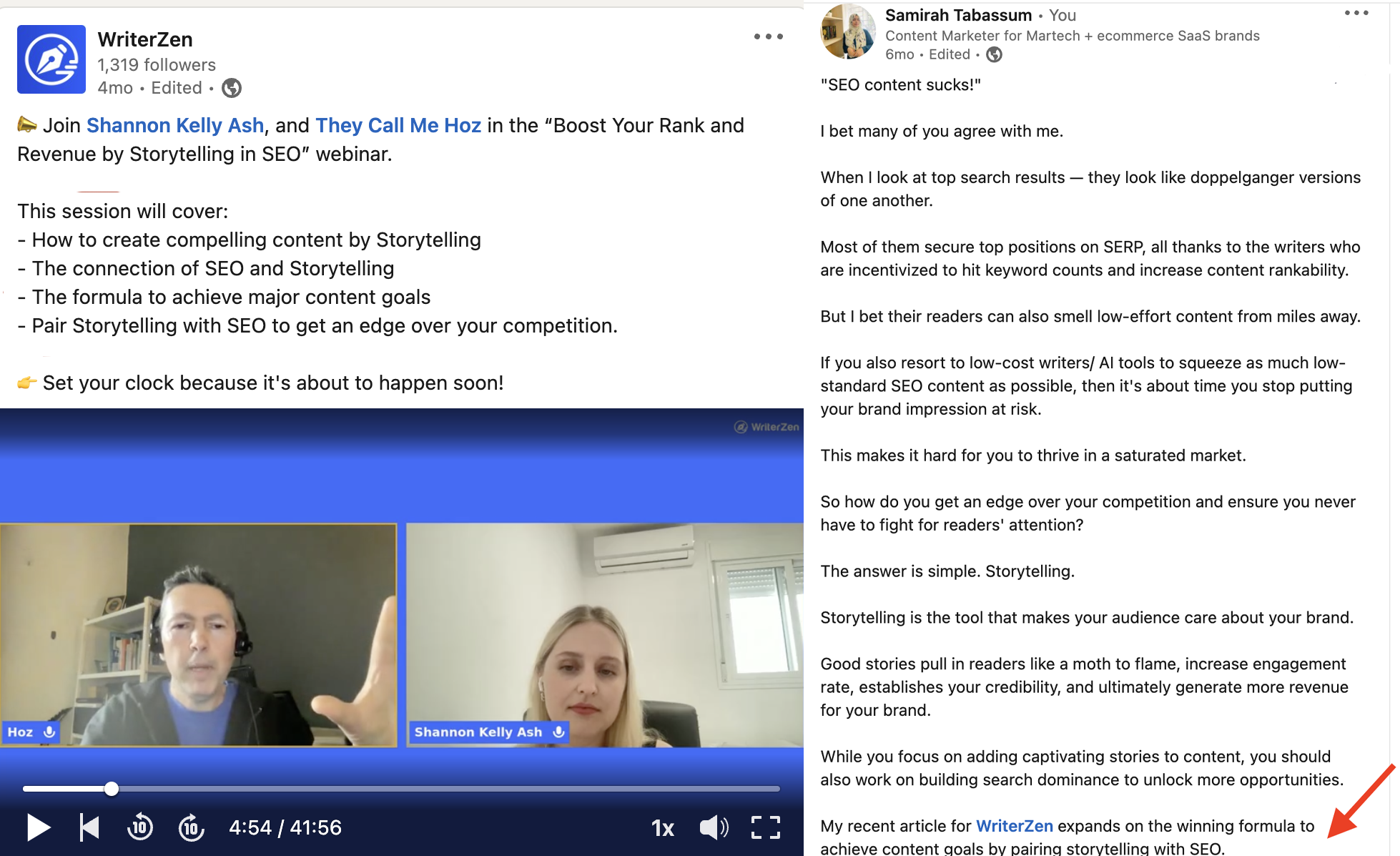
See, getting your collaborators to share and promote your work is crucial. It’s like getting a VIP pass to their audience and building trust along the way. I mean, if someone stumbles upon an event because they’re keen on content distribution and have a soft spot for Hiba, the chances of them signing up shoot through the roof!
However, when it comes to spreading content, collaborations are sometimes left in the dust. And that’s a missed opportunity because they can really make your content fly.
So how do you dive into collaboration? Start by scouting for people who are swimming in the same pool—like, if you’re all about email marketing software, why not team up with some top-notch email marketers? Whip up a video together, or invite them to pen a guest post.
Once the content’s ready to roll, you both hit the share button, opening doors to each other’s followers. You’d be amazed at how many experts and big thinkers are open to joining forces, even with the new kids on the block.
And remember, give your collaborators the green light to share away.
Sometimes, all it takes is one share from your collaborator to kickstart a chat with your future customer. So, why not give collaborations a shot and see your content’s lifecycle and reach new heights?
Final Thoughts
Now, you have a strategic blueprint and the knowledge you need to master content distribution.
Yet, as you promote your content, be sure to review your results. The data can reveal which content formats and topics resonate best with your audience. This will tell you which content to prioritize.
And, while you’re at it, increase your content’s lifespan by updating it as needed. The longer you keep it fresh and packed with relevant, valuable info, the longer it can generate results for you. It's wise to schedule periodic audits to determine what content needs to be refreshed.
Then, schedule necessary content updates on your calendar so that they’re not forgotten.


